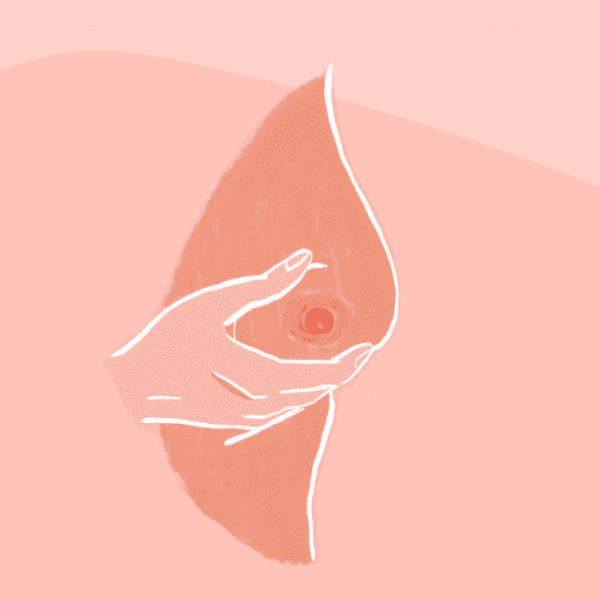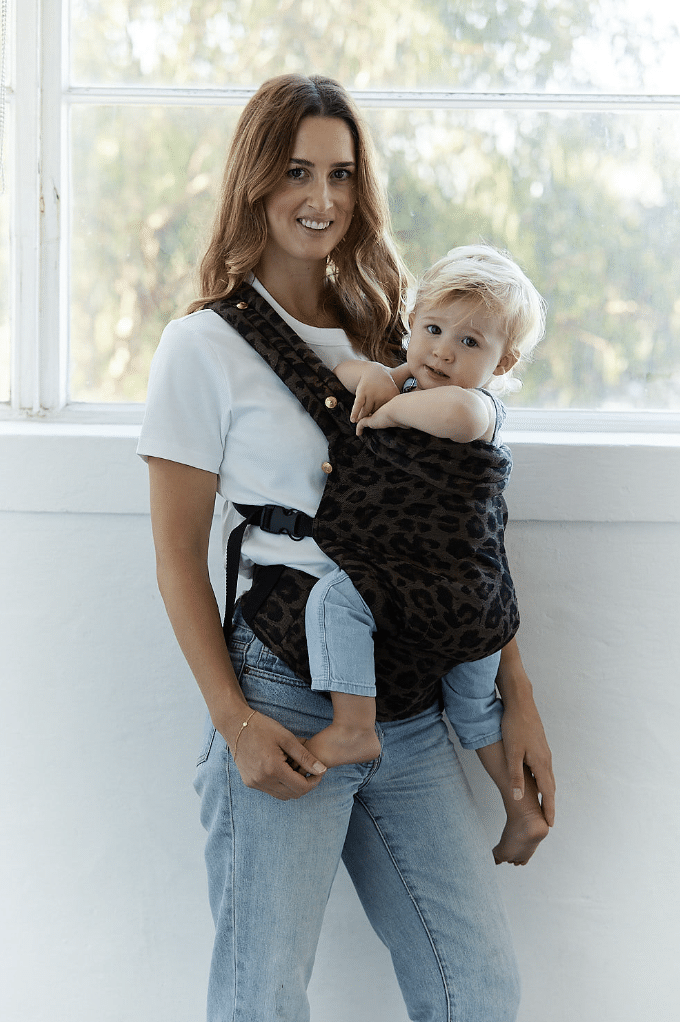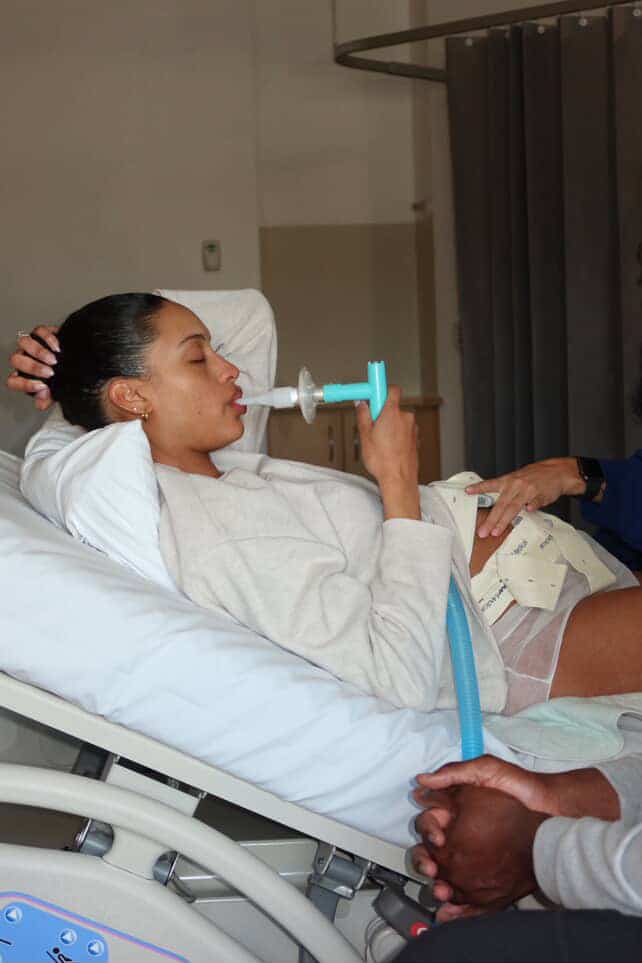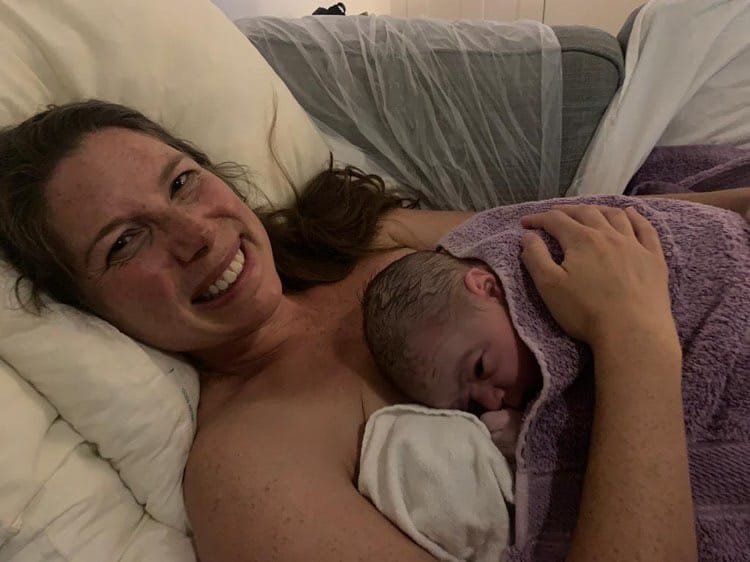Podcasts Ashe Davenport
EPISODE 207
Ashe Davenport

After a gloriously indulgent holiday in Mexico, Ashe and her husband, Sam, returned to Melbourne and fell pregnant soon after. Her easy conception was misleading; she expected the rest of the journey to be smooth and it wasn’t like that at all. Physically it was a straightforward, textbook pregnancy but her emotional journey was tumultuous. She enrolled in the midwifery programme at the Royal Womens in Melbourne where she saw a different midwife at every appointment, an experience that didn’t allow her to connect with or open up to her caregivers.
“I wish I had hired a doula or had a dedicated midwife; I didn’t feel a connection to the hospital nor did I have a solid team to fall back on and find comfort in.”
In the lead up to her due date and the weeks that followed, Ashe encountered a number of fear-inducing obstetricians who warned her of the worst case scenarios if she refused an induction. Thankfully, there was one midwife who offered a different perspective:
“She said to me: look, everything is ticking along, it’s moving the way it needs to move and the next time I see you’re going to come in here, we’ll close the blinds and you’ll have a baby. It was a little crumb of empowerment, kindness, warmth and I think that’s the energy you want throughout the process, regardless of what you end up requiring.
“At 42 weeks I went into the induction feeling like I’d failed already. It wasn’t a positive experience, I felt really pressured into it and I felt really stressed. My body was really tense…it would have been really beneficial for me to take everything they were saying in those appointments past 40weeks with a bit of distance.”
After having the induction gel applied, Ashe and Sam went for a walk to a local cafe in the middle of a Melbourne heatwave. She started having intense cramps in her groin and legs so they returned to the hospital and six hours afterwards the gel was applied again. She was 1cm dilated so didn’t qualify for a birthing suite and was left writhing in the waiting room, an experience not exactly conducive to natural, supported birth. Once in a suite she had her waters broken and an epidural before they started the syntocin drip.
“My birth was on autopilot over the course of the next 4-5 hours. I felt like a body that was there to have a baby extracted from it. I woke up and was watching the heart rate monitor and I noticed DeeDee’s heart rate drop with every contraction and then slowly stagger back to normal. That’s when midwives and doctors raced into the room as she was in major distress.”
Ashe had an episiotomy and vacuum-assisted delivery and when DeeDee was handed to her, she felt nothing.
“When she was born and I held her I had no connection. I thought: What is that? That’s what I felt. It’s even sadder now because I know her and love her. I remember thinking: How did that come out of me? There was no connection at all and that’s where we started. We were looking at each other through glass; that’s what it felt like.
“Sam didn’t gather how removed I was. I just wanted to feed and put her down. I was sore, I had a catheter, I couldn’t move…it was unbelievable to me that I was expected to work after what I’d been through; I just wanted to rest. But she sorted my milk out for me, there was never an issue with that…at night once we were home, my first response to her crying would be to curl into a ball and block my ears, I couldn’t bear it.”
Ashe admits that she suffered in isolation by choice. She didn’t want anyone to know how she felt and she didn’t want anyone to help. Her distress was shrouded in her feelings of failure from birth.
“I felt that if I needed help it would have meant that I wasn’t up for the job.”
Ashe didn’t seek help from the community nurse or a GP and believes she felt through the cracks as they moved when DeeDee was 3months old. With time their connection strengthened, her love for DeeDee sustaining her. But Ashe says her PND journey hasn’t been linear.
“I would open up to a friend of mine, I would complain about having no sleep, jokes back and forth, all the mum gripes, but every so often I’d take it a bit further than her, a bit darker and a bit bleeker and she asked me if I was ok. And in those moments I felt so exposed. But I was able to muddle through. My journey with PND was non-linear; I had great weeks where I would have 10 babies and it was in one of those moments when I fell pregnant again.
“Franny’s pregnancy was a lot better because I was so busy. DeeDee was only 12 months old, she needed a lot of lifting and hands-on care so my hands were full, the pregnancy happened in the background. It wasn’t until I was close to the birth that I discovered all of this residual shame about DeeDee’s birth. I saw a psychologist during that pregnancy, she knew me and I went in for a brush up but I didn’t tell her how much I was struggling.”
Ashe opted for shared care with a local GP and didn’t tell anyone her due date. In fact, she told her mum and mother-in-law that she was due two weeks later than she actually was which removed the pressure and created space for her as she headed into overdue territory once again.
On Christmas Eve she woke up with period pain and was on the birthing ball for a few hours, watching Love Actually and eating sandwiches. When she got to the hospital she was already 5cm dilated.
“It was a totally different experience, she shot out, and it was excruciating and crazy but only for the last little bit. We woke up on Christmas Day and I felt like a kid who had been given this amazing present. I really wanted to go home and spend time with DeeDee and our family trickled by and gave us food and it was a very storybook birth.
“I was high as a kite for a few days and then we fell into a tired newborn, toddler realm which was still ok. Deedee was in daycare and I had friends in the neighbourhood but the PND came back and I started sinking and I didn’t tell anyone. I called PANDA but I wasn’t prepared to say that I was sad and lonely, I just wanted them to justify that what I was doing was hard and tiring. I was at war with myself and I fought myself into a corner and no one could reach me.
“I stopped going out, I had Hey Dougie playing on a loop, I was in a darkened house because we didn’t have aircon and it was hot, the logistical challenge of going out was too ha
rd for me. I let myself sink…it was very grim.”
Ashe nurtured herself by writing about her feelings and experiences and she started to see the light and humour in her depression. The major turning point was an anger management meeting because she’d discovered that her depression manifested as anger; she would throw things and scream at the top of her lungs, like the sadness was exploding out of her.
“I went into this little room, a tiny room off a hall, there was a badminton tournament in the hall and I went and sat down and it was so dire. Why am I in the country with four old ladies talking about anger?..I just had buckets of tears falling out and it was the best audience because they were so lovely, one of them stood behind me and put the most patient hand on my back….I reached out to Sam and told him I had thoughts about ending my life and he took time off work. I realised that hiding it became dangerous.” Ashe started to practise mindfulness; she learnt how to be present, observe her thoughts without getting pulled into them. “I’m a lot more equipped to be in a space and be open to the moment, whatever that moment is.”
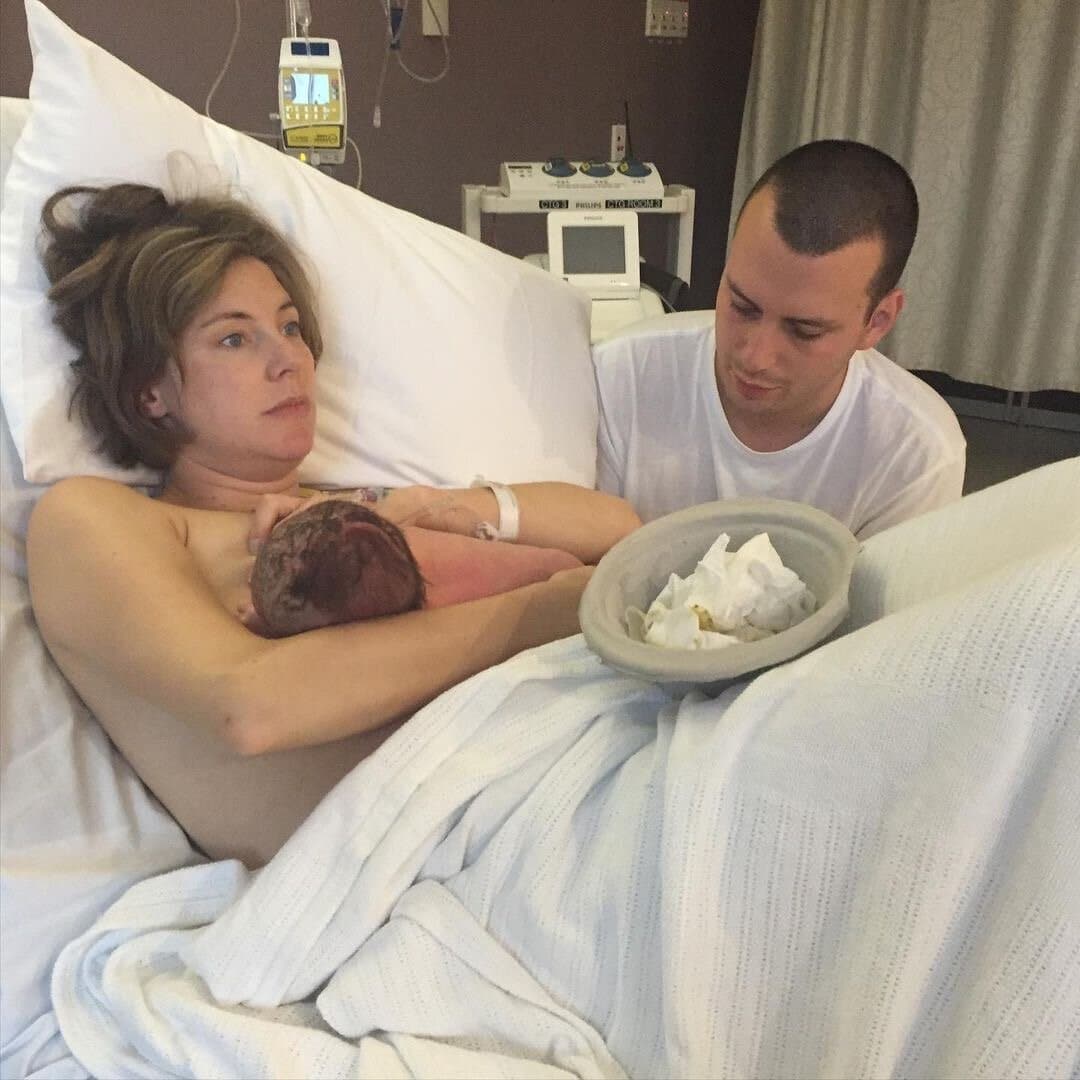
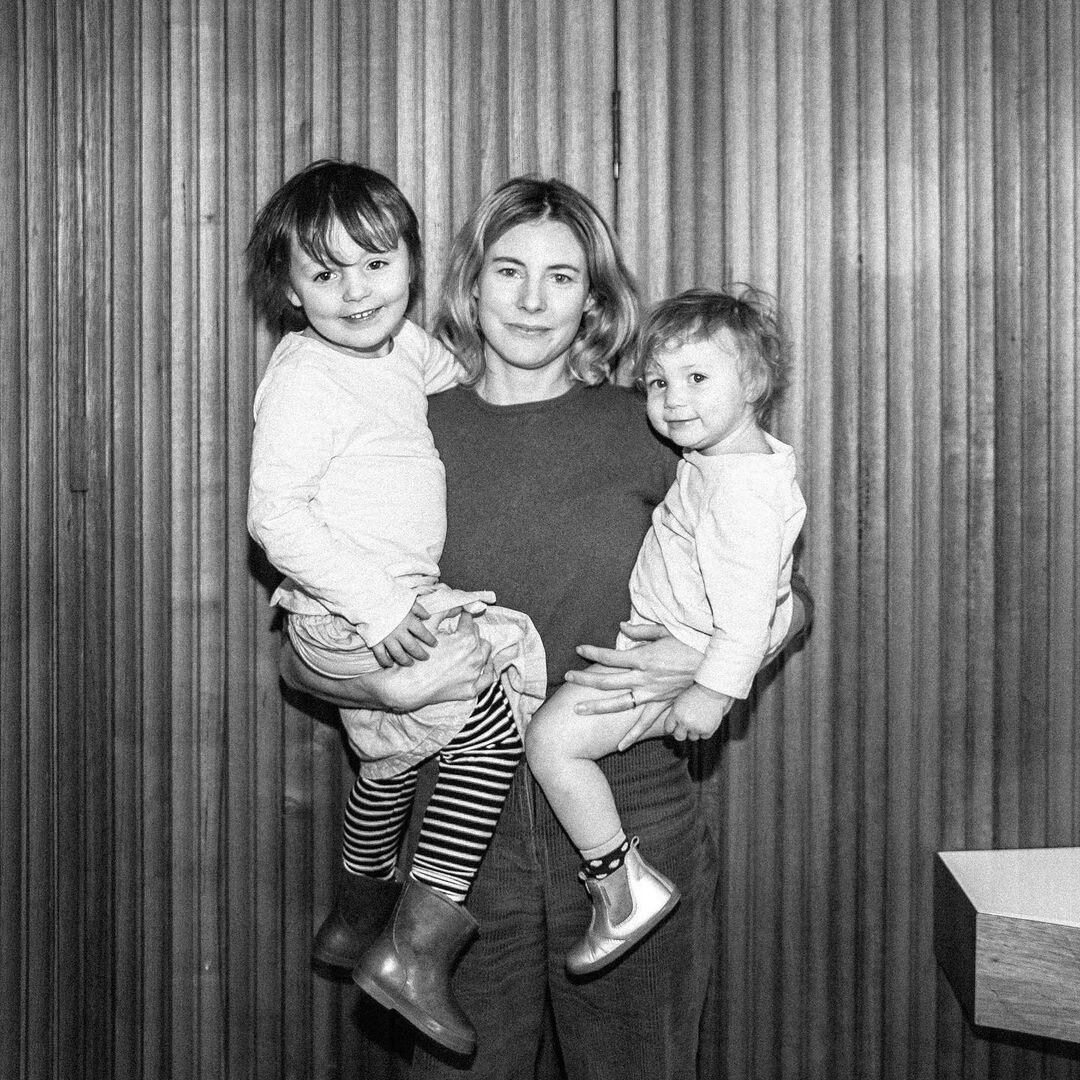
Topics Discussed
42 weeks, Epidural, Induction, Postnatal anxiety and depression, Two births
Episode Sponsor
Today’s episode is brought to you by The Mylk Society. The Mylk Society is Australia’s no 1 and emerging favourite online destination for breastfeeding mums. Clothes that allow mums to feel empowered and stylish while breastfeeding anywhere, any time.
Founded and run by the lovely Karina, who struggled to find breastfeeding friendly clothing that didn’t make her feel frumpy, was activewear or fell apart after a couple of washes. The Mylk Society clothes are made with premium fabric that has been tested to last and designed to be comfortable, functional, versatile and leave women feeling fabulous – whilst still made for mum life. Their newest and most popular collection has recently launched and is proving a hit with mums all over Australia – with record numbers selling – what makes it even more special is that it is an all Australian Made collection that supports over 15 small Aussie businesses. Make sure not to miss out on their Black Friday discounts by signing up to their newsletter on their website. To enjoy 10% off The Mylk Society use code ABSMAMA.
I’d love to help prepare you for your breastfeeding journey. Let me hold your hand through antenatal expressing, share with you the importance of the golden hour and how to navigate the first week of your breastfeeding journey. If you’d like to find out more about my new Breastfeeding Guide you can pick it up HERE
Categories
Related Products
-
Breastfeeding Guide
3 reviews$19.95A guide to inspire pregnant women to prepare for their breastfeeding journey.
Join the conversation
Sign up to get the latest updates, freebies, podcast releases straight into your inbox
@AustralianBirthStories
Follow along with us
@AustralianBirthStories
Follow along with us
@AustralianBirthStories
Follow along with us
@AustralianBirthStories
Follow along with us
@AustralianBirthStories
Follow along with us
@AustralianBirthStories
Follow along with us
@AustralianBirthStories
Follow along with us
@AustralianBirthStories
Follow along with us
@AustralianBirthStories
Follow along with us
@AustralianBirthStories
Follow along with us
@AustralianBirthStories
Follow along with us
@AustralianBirthStories
Follow along with us
